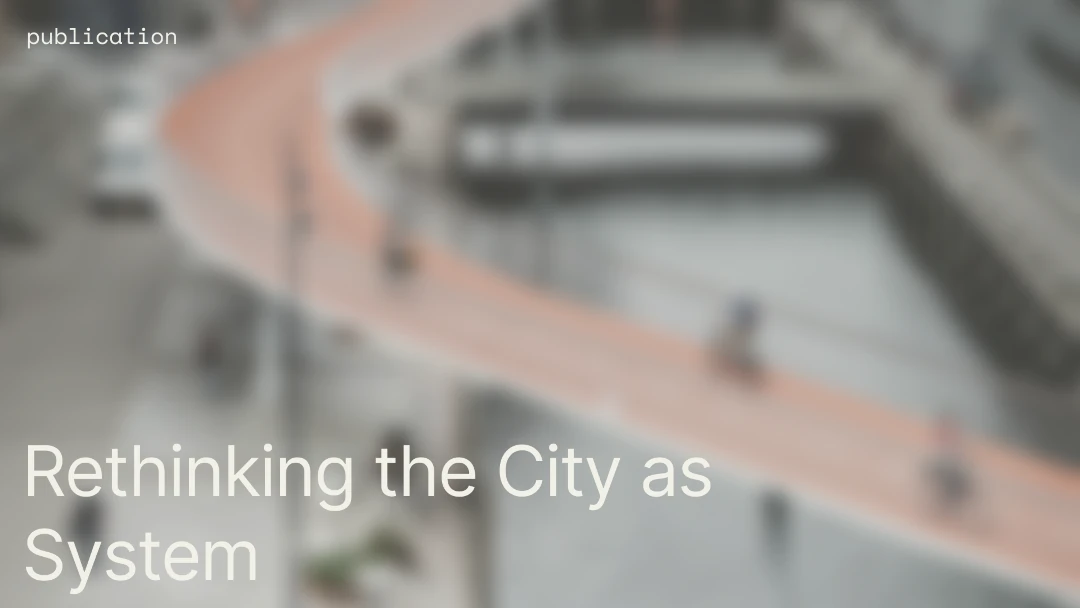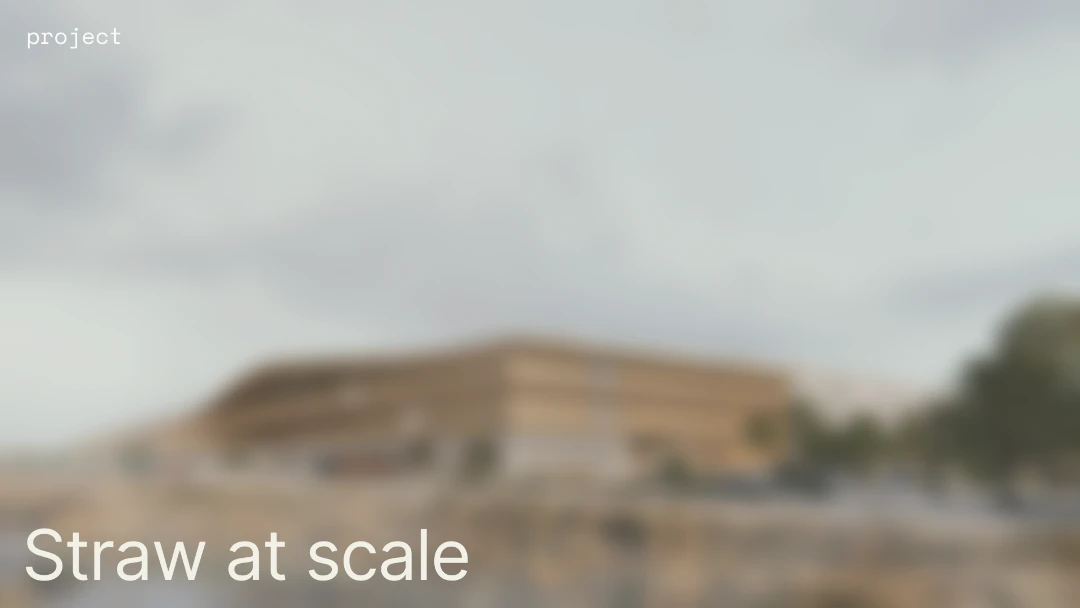
Bio
As an architect and urbanist, Jacob has worked across the industry for over 20 years within companies like NORD, Gehl, and Lendager. For the past 5 years he has been holding the position as Head of Resiliency at COBE. Working in the cracks between different sectors and disciplines Jacob has a strong focus on changing the industry through collaboration and process optimisations.
You have worked across different sectors and disciplines, with a strong focus on collaboration, what is it that drives you the most?
The construction industry has historically not been very agile when it comes to implementing new processes and solutions — it is a heavy industry to change. For 20 years I have been frustrated trying to break barriers between very heavy silos across the industry, to create more dialogue, transparency and understanding across sectors and inspire more innovation. The green transition has already broken a lot of silos I thought would never change such as financing new projects, taking on new types of clients, merging impact and tech, clients and manufacturers collaborating and testing new products together, or engineers and architects working hand in hand. For 20 years I have been trying to put people together in a room and figure out how to work together, in a smarter and more transparent way.
In the end I found that it's always about listening and trying to understand the people you sit in the room with. What is it that they want to achieve? For some people it's about profit only, while for others impact matters most. It's important that these perspectives can meet, otherwise there is no common direction and we don’t move towards the goal, which is to find a way to make this industry more sustainable.
So I think the key to collaboration is a lot about being honest with ourselves about what drives us internally. Only then can we also find better paths to a common goal.
Of course that takes time and for some companies it takes more time than others and will not happen overnight. And that’s okay, It's important to also understand the different speeds and respect them. What’s fundamental to understand are the risks for the client, how the company works and how we can best support them in pushing them forward.
So, to answer the question, I am really driven by figuring out where we can actually move something and where we have to respect the time and people along the process to achieve the best outcome.
You mentioned how slow and bulky this industry is, yet somehow unimaginable changes have been steadily happening over the last few years. What do you think are the main barriers today for pushing the sustainable agenda?
Of course there are a lot of small barriers within this industry, but I'm not too worried about those. I think it's the bigger political questions that are hindering us. At the moment it's really about getting regulations up to speed. A lot of the tools are in place and in general I feel people are ready and there are many ambitious actors across the sector. The Reduction Roadmap is an incredible example of how companies in the private sector have initiated and funded a study to illustrate the necessary carbon reductions needed in the Danish construction industry to meet the requirements of the Paris Agreement. But the stepladder towards carbon reduction is also very steep.
I think this Roadmap is extremely important to illustrate a common path, but soon enough “optimising” the numbers of the Life Cycle Assessments will not suffice anymore. As long as the average size of housing per Dane does not decrease, it will not be enough. The average sizes of new single family houses have grown from 120 m2 in 1960 to 210 in 2020. On average all Danes occupy almost 60 m2 per person — a number which is increasing. Which means we can do whatever we want by being careful with our carbon emissions of construction per square meter and reducing them as much as possible; if we just keep expanding our physical footprint it will make no difference, our impact will still be too high. Unless we find some ways of limiting that, such as living smaller and smarter — in other words to densify — we will not be in line with our targets. Of course in parallel we should still understand the numbers and what goes into constructing a building, but, overall, building less is the only solution we really have.
This whole problem revolves around creating incentives to live more compactly. Here taxes, regulation, residential politics and how to organise cities and the population within them are crucial tools to create this change. This approach of building less will of course have consequences, at least in the beginning. Limiting the amount of new buildings will be a tough pill to swallow for the construction industry, which is huge in Denmark. It’s easy to see why politicians are slow at taking such bold decisions. Still, I think overall the biggest barrier to the sustainable agenda is politics.
While a big shift needs to happen on the regulatory side, what are your thoughts on optimising processes and material choices today?
For some time I was super enthusiastic about Timber entering the industry. But then it seemed as if suddenly everyone just tried to replace concrete with wood, which is not the answer. Timber has a better carbon footprint, but we also need forests. At the same time the concrete industry is also evolving and pushing innovation. We need to sort of optimise everything at the same time and we need to find ways of making old mineral materials work together with new materials. We need smart, hybrid combinations.
The biggest problem with new materials applied on a large scale, however, is that many clients are afraid of using them because they often haven’t been tested. So, working with these new solutions comes down to being able to help clients understand them and work with them in the right way. In other words, helping them understand risks and rewards. And to take on risks means that we need to work together in more complex collaborations, to give reassurance to various stakeholders. Of course, then, within this unison solution we need to also get better at reusing materials. And there the problem is about figuring out how to seamlessly get access, store and incorporate reused materials.
In the meantime I think it's about respecting how different companies or economies work at different speeds and trying to understand the different aspects of the industry. We have these presumptions on how other people or actors in the industry should proceed and there is a lot of scepticism, negativity and lack of trust between parties and sectors in this industry. Mistrust is a huge barrier.
Do you think data can be a leverage in terms of building up that trust, through transparency as well as proof of new methodologies and solutions?
It is crucial to have something applicable, by sharing this information in a certain way or format that can be used by others. A very good example is Professor at the Department of the Built Environment at AAU Harpa Birgisdottir and her team. They have been such an active party across the sector, helping to break down the mistrust. Harpa and her team are like a “third eye” in the industry and that helps a lot in pushing us all forward, learning faster together and also collaborating — through them — with so many different stakeholders. When this work is done in groups the collaboration helps build trust.
Having an industrial PhD in-house at Cobe has also been a very positive experience, because all the work is scientific and peer-reviewed. This means you're truly taking something out of your marketing department and bringing it into a very different place — something concrete and backed by science. There is so much data floating around and so many statements surrounding it that I think data has to be as neutral as possible and come from a reputable third party.
What do you imagine the built environment should look like in 2030? A resilient future?
I have a lot of hopes. I have been looking into examples of how we could handle the population growth of Denmark with the existing building stock; 80% of the Danish population growth until 2040 will happen within the finger plan inside the 34 municipalities surrounding Copenhagen.
My dream would be to recalibrate our building stock in a way that would let it fit more people. Reducing the total living and working area per person, would reduce the necessity for building so much. Less building activity would completely change the carbon footprint of the industry. Although the calculations and data documenting the climatic footprints of constructions are still very important, we need to get back to a place where the climatically feasible decisions of design become more intuitive. This way we can focus on the bigger questions on how we want to live together in our society. Which again is a question of planning.
Of course this also means that if construction work would go down by 70%, we would also need to find an economically viable solution for this. Different business models need to arise for the whole country and across different industries, such as farming, for example.
The whole commercial building stock will also change, globally, there are clear indications after COVID, that there will be much less need. And those spaces will also need to be repurposed, which is another way of limiting the amount of new builds. My hope is that LCAs and all the calculations on a detailed level will become more intuitive and that there will be bigger shifts happening on a higher level, across politics and society. By 2030 I hope we have figured out how to make people mobile in the existing housing stock.
Lastly, what is your advice for those who strive to change the industry for the better?
Listen. Be open to other people without too many pre assumptions about them. Be optimistic, especially when it comes to climate change. It doesn't really help to go into a state of depression or aggression. It's of course difficult, but I really don't believe in that approach. I believe we need to innovate, be generous and positive, and work with these energies.
Instead of having enemies, you can actually try to like the people on the other side of the table. Instead of pointing fingers, we should listen to each other in a more open way. This openness is necessary to make any meaningful progress.




























